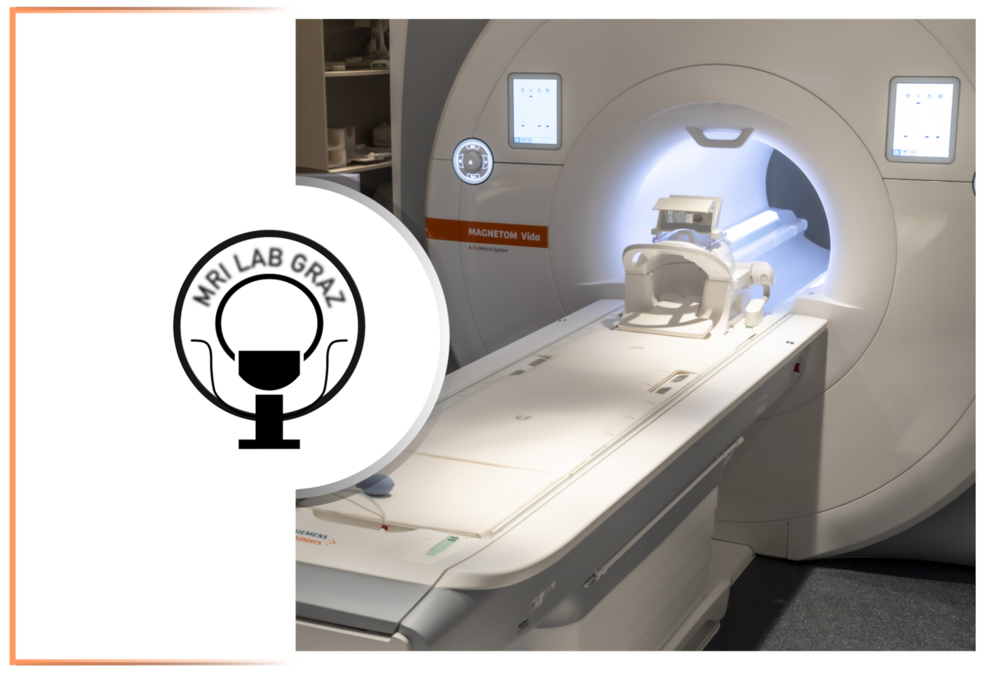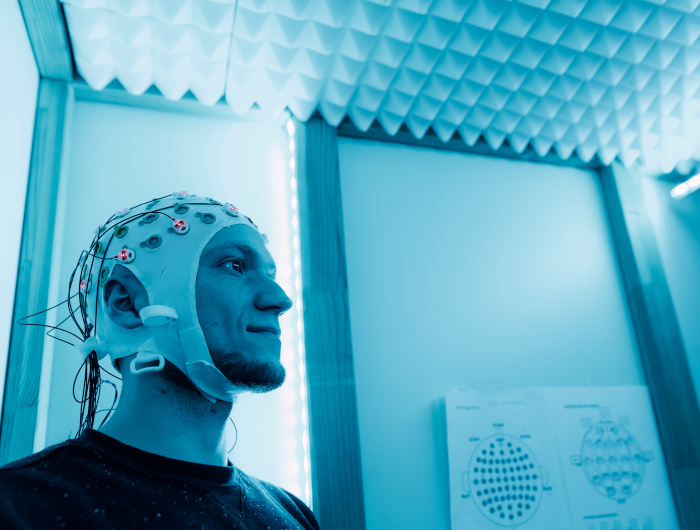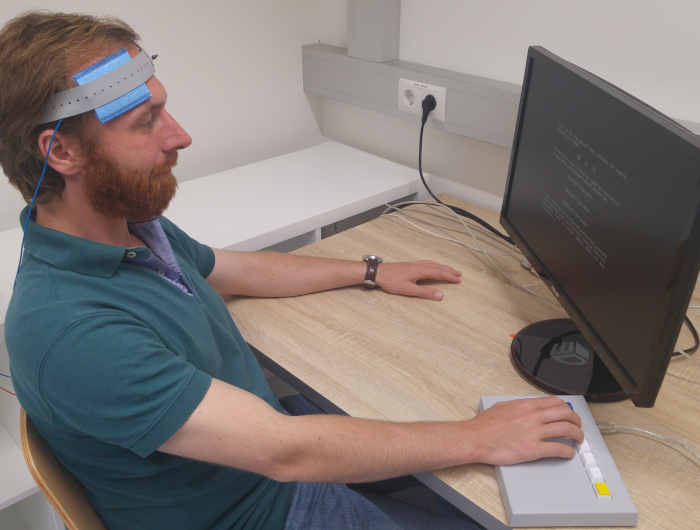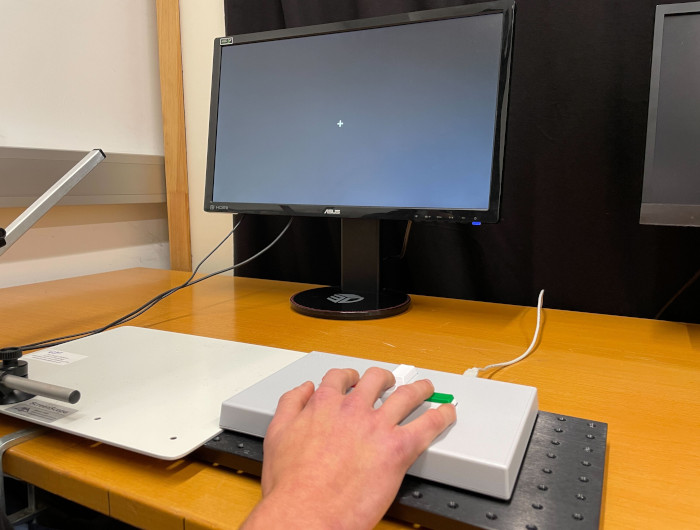Methods
Applied practices in general psychology
(f)MRI - Functional magnetic resonance imaging
(Functional) magnetic resonance imaging is used to measure brain activity as well as structural changes of the brain. Here, in particular deep brain structures can be captured in three dimensions. This method is one of the most complex techniques of the human neuroscience.


EEG - Electroencephalography
Electroencephalography (EEG) is a method to measure electrical activity of the brain. For that, electrodes are used to measure the electrical activity from the surface of the scalp. The biggest advantage of this specific method lies in its high temporal resolution of the recording.
Eye-Tracking
During Eye-Tracking, eye movements are measured using cameras and invisible to the human eye infrared light. Analysis of the eye movements provides valuable insights into how information is selected and processed during various tasks.

TMS/tES - Transcranial Magnetic/Electrical Stimulation
Transcranial magnetic stimulation (TMS) and transcranial electrical stimulation (tES) are non-invasive methods of brain stimulation which modulate the activity of brain areas and neuronal networks. They allow studying causal effects of brain activity on psychological processes. TMS is based on the induction of very short-time (<1ms) electrical current to the brain by an electromagnetic field, whereas tES is based on the direct application of a very small electrical current (~1mA) via electrodes on the surface of the head. Both methods are able to induce inhibiting or activating effects.
Reaction Times
Computer technologies enable the measurement of reaction within milliseconds. This allows to make assumptions about specific information processing activities. Mainly reactions in rather simple tasks (e.g., Is the dot on the left or right side?) are recorded. Due to high control in a laboratory setting and the specific manipulation of single parameters in the experimental tasks, this method is predominantly used to identify causal relationships.
